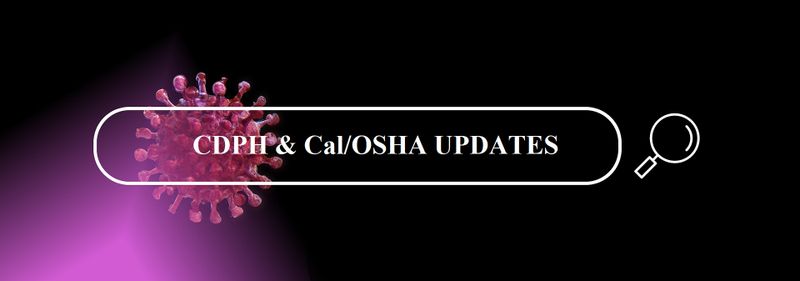| March 16, 2023
California’s COVID-19 state of emergency came to an end on February 28, 2023. Days later, the Department of Public Health (CDPH) updated its public health order with the focus being on two categories: (1) isolation and quarantine requirements, and (2) face covering recommendations.
Isolation and Quarantine: Effective March 13, 2023, CDPH updated its isolation recommendations, in alignment with the Centers for Disease Control recommendations. Those who have tested positive for COVID-19 should continue to isolate for 5 days, but may leave isolation after 5 days, if they are feeling well, symptoms are improving and are fever-free for 24 hours. An updated definition of infectious period is also included to align with the updated isolation recommendations of persons infected with COVID-19.
For the purposes of the CDPH’s recommendations regarding isolation and quarantine for persons infected with or exposed to COVID-19, the following definitions apply:
"Close Contact" means the following: - In indoor spaces 400,000 or fewer cubic feet per floor (such as home, clinic waiting room, airplane etc.), a close contact is defined as sharing the same indoor airspace for a cumulative total of 15 minutes or more over a 24-hour period (for example, three separate 5-minute exposures for a total of 15 minutes) during a confirmed case's infectious period.
- In large indoor spaces greater than 400,000 cubic feet per floor (such as open-floor-plan offices, warehouses, large retail stores, manufacturing, or food processing facilities), a close contact is defined as being within 6 feet of the confirmed case for a cumulative total of 15 minutes or more over a 24-hour period during the confirmed case's infectious period.
Spaces that are separated by floor-to-ceiling walls (e.g., offices, suites, rooms, waiting areas, bathrooms, or break or eating areas that are separated by floor-to-ceiling walls) must be considered distinct indoor airspaces.
Infectious Period is defined as: - For symptomatic confirmed cases, 2 days before the confirmed case had any symptoms (symptom onset date is Day 0) through Days 5–10 after symptoms first appeared AND 24 hours have passed with no fever, without the use of fever-reducing medications, and symptoms have improved, OR
- For asymptomatic confirmed cases, 2 days before the positive specimen collection date (collection date is Day 0) through Day 5 after positive specimen collection date for their first positive COVID-19 test.
For the purposes of identifying close contacts and exposures, symptomatic and asymptomatic confirmed cases who end isolation in accordance with CDPH Isolation and Quarantine Guidance are no longer considered to be within their infectious period.
Confirmed Case is defined as:
- A person who has received a positive result of the presence of SARS-CoV-2 virus as confirmed by a COVID-19 viral test or clinical diagnosis
Face Coverings: All individuals must follow the requirements in the Guidance for the Use of Face Coverings issued by the CDPH through April 2, 2023, after which time they will become recommendations.
Cal/OSHA Non-Emergency Regulation FAQs now reflect the new CDPH order: As expected, on March 13, 2023, Cal/OSHA updated its COVID-19 Non-Emergency Regulation FAQs to account for the above changes: - Cal/OSHA has adopted CDPH’s definition of infectious period. COVID-19 cases can return to work after five days without a negative test, if the person feels well, with improving symptoms are improving and no fever for 24 hours. Employers should heed this newest change as now employees can more easily return to work post-infection.
- Cal/OSHA’s guidance maintains that COVID-19 cases that return to work must wear a face covering for ten days after symptoms first appear or their first positive test.
Employers should reference these FAQs regularly for the latest workplace guidance. For any questions regarding this evolving area, contact Rosasco Law Group APC for assistance. |

